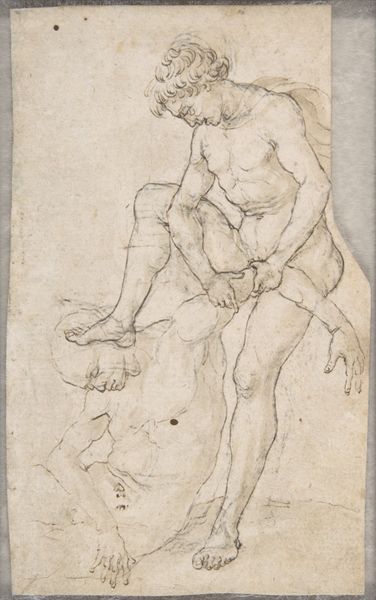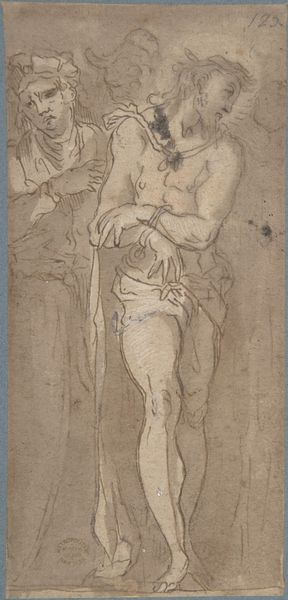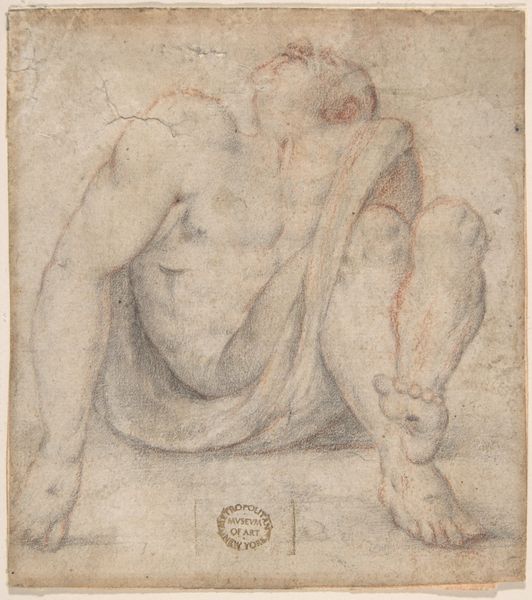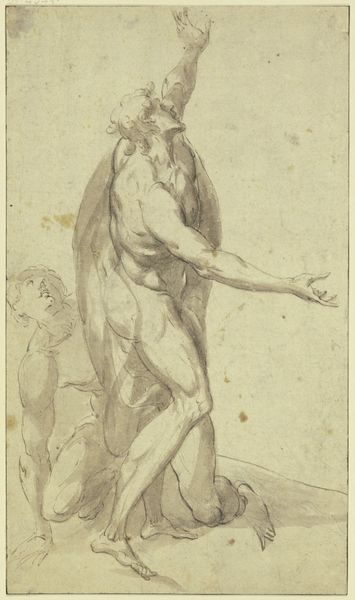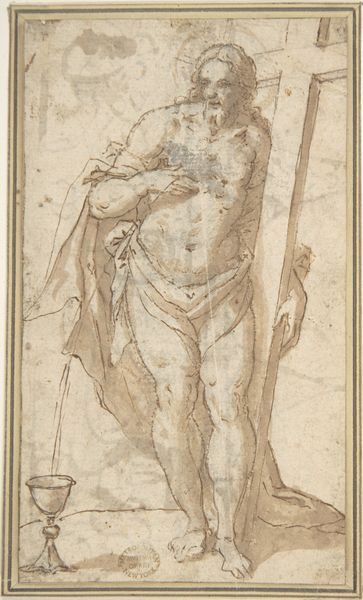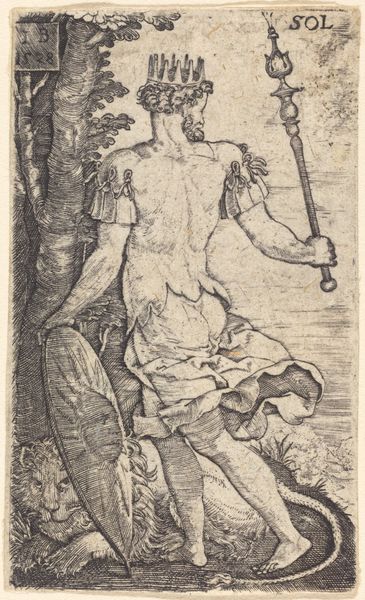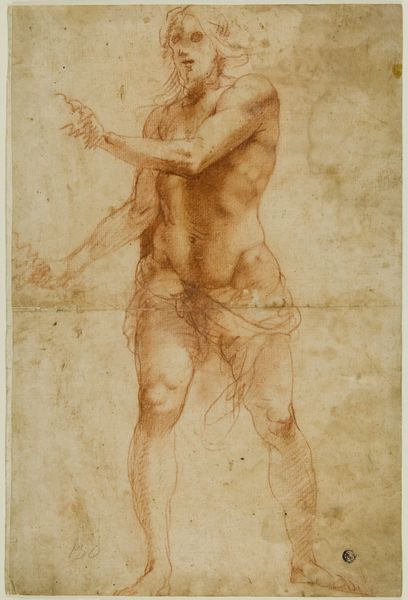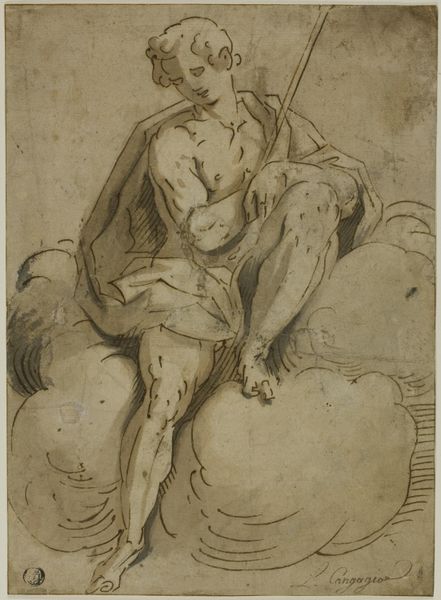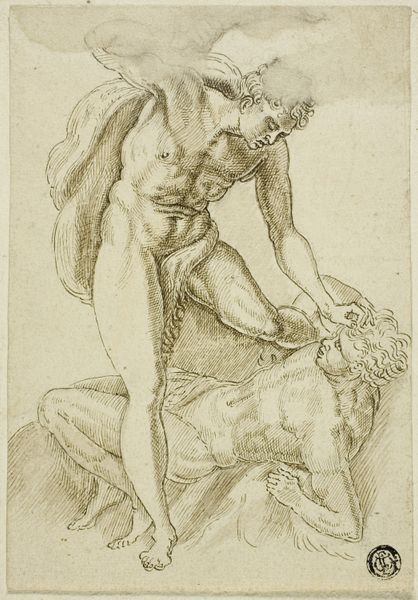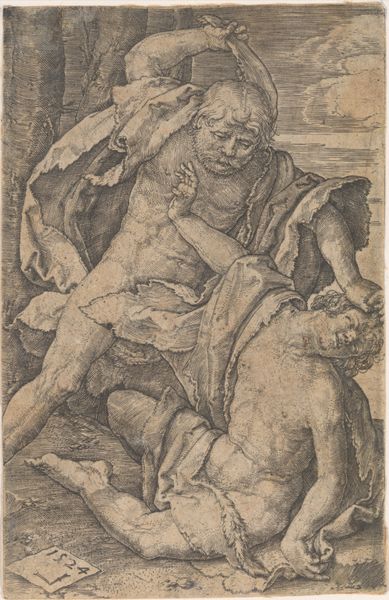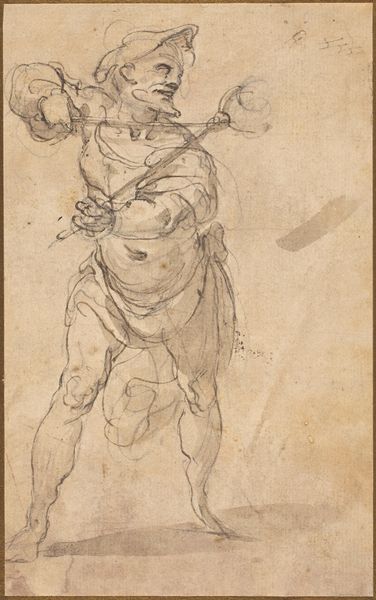
drawing, paper, ink, charcoal
#
portrait
#
drawing
#
charcoal drawing
#
figuration
#
paper
#
ink
#
charcoal
#
academic-art
Dimensions: 252 × 145 mm
Copyright: Public Domain
Curator: Here we have an intriguing drawing attributed to Lattanzio Gambara, known as Standing Prophet Holding a Book. Though undated, its style firmly situates it within the artistic currents of the 16th century. It’s rendered in ink and charcoal on paper. Editor: The aged paper gives the figure an ethereal feel. I find it thought-provoking how the book anchors this imposing figure who appears to float, almost lost in thought, or perhaps exiled by society. Curator: Indeed. This work serves as a window into the artistic conventions of its time. Artists like Gambara were deeply engaged in rendering the human form, often drawing on classical sculpture for inspiration, with the book referencing scholarship, intellectual power and access to literacy. Editor: It raises important questions about access to knowledge and power. In Gambara's time, who was given permission to interpret written texts? The representation of the prophet invites us to analyze not only artistic techniques but the political economy of representation. His form reminds me of Michelangelo’s Moses. Curator: Michelangelo’s impact cannot be understated. Academic art favored detailed anatomical study as seen in the figure's sinewy build and careful shading. The dramatic pose serves a rhetorical purpose, meant to communicate gravitas and authority to its viewers, potentially a preparatory piece for a larger work. Editor: Looking closely, the rawness of the drawing, in contrast to the polished image such figures generally occupy in the history of art, disrupts those assumptions. This prophet challenges notions of a fixed or timeless archetype and reminds us of art's potential to create conversation around the role of masculinity and cultural identity. Curator: These drawings functioned within workshops, spaces of social and economic transaction, acting as tools for artistic development and collaboration. Considering this historical setting allows a richer appreciation of its creative process. Editor: Engaging with Gambara's sketch underscores the fluid nature of history, inviting critical reevaluation and revealing multiple layers of artistic creation as a site for contemporary issues. It invites conversations, sparking new modes of perceiving old stories. Curator: Precisely. This work, when analyzed critically, underscores the complex interweaving of cultural production and socio-historical context, emphasizing how the artistic expressions mirror power dynamics of their time. Editor: Agreed, allowing us to see that, despite temporal distance, this powerful image challenges us to assess existing socio-cultural norms by actively bridging the past and present.
Comments
No comments
Be the first to comment and join the conversation on the ultimate creative platform.
